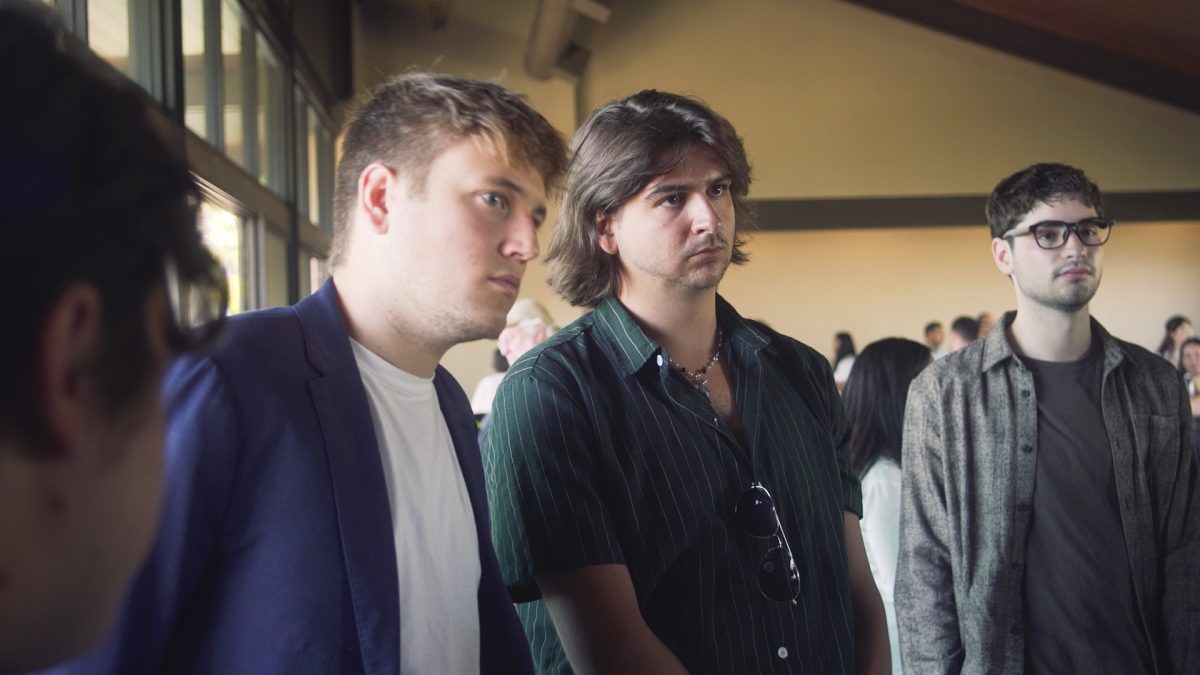District administrators joined representatives from the Santa Clara County Board of Supervisors and an audience of faculty, staff and students for a presentation and Q&A about the proposed on-campus county medical clinic on April 18 in the campus center.
The event’s aim was to provide more information to the campus community about the clinic, with more events to come, Trustee Patrick Ahrens told La Voz.
“Thus far, there hasn’t been a lot of communication … We’ve heard loud and clear from our constituency groups that they desire information and input on decisions that will impact the campus,” Ahrens said.

Chancellor Lee Lambert, Supervisor Joe Simitian and county officials explained that the county-funded clinic would help fulfill healthcare needs for De Anza students and the surrounding community.
After the presentation, Foothill-De Anza Foundation Executive Director Dennis Cima moderated a Q&A in which he asked speakers a list of 12 prepared questions, which came from almost 180 submitted questions. Audience members were asked not to interrupt or ask follow-ups during the Q&A.
When asked how the medical center would benefit students directly, CEO at Santa Clara Health and Hospital System Paul Lorenz said it would provide access to students and their family members who likely live in the area. Lorenz said this would also benefit the community in the long-term because it would help students interested in health professions get experience while incentivizing them to stay and continue serving this community.
Interim college President Christina Espinosa-Pieb interrupted the Q&A to ask professor Anita Kandula, dean of the biological, health and environmental sciences division, to speak about the opportunities this clinic would logistically provide to health students.
Kandula said the clinic would have a “very limited scope,” offering around five to seven spots for students to intern annually. Nursing in particular is an impacted major at De Anza, with 1,858 students in the 2020-2021 school year. Kandula said the clinic “wouldn’t actually be of much help considering the cost to the campus.”

“De Anza College is not in the business of healthcare, we’re in the business of educating,” Kandula said, which was met with loud applause from the audience.
“We heard from the dean of the health (department) that it wouldn’t necessarily even benefit our health students,” Program Coordinator of the Vasconcellos Institute of Democracy in Action Angelica Esquivel said. “Because there wasn’t an opportunity to have a conversation (about that), I think there were still a lot of questions.”
Regarding the financial cost of the clinic, Lambert said he does not anticipate any cost to the college in “hard dollars” as the $50 million project will be funded entirely by Santa Clara County. However, Lambert said there will be district costs associated with the time district employees spend negotiating the logistics of the project.
Another question expressed concern that construction of the clinic would delay the college in addressing greater needs on campus, such as Measure G projects to replace crumbling infrastructure. Lambert said the clinic will not change decisions about Measure G, and the college can have “some overlap of our projects.”
Another concern raised was what would be done to mitigate potential disruption of the monthly flea market, which uses parking lots A and B, the site where the proposed clinic would be constructed. The flea market is responsible for approximately $300,000 of the De Anza Student Government’s $1 million budget which is used to fund student programs like Umoja, Puente and IMPACT AAPI among others. Lambert said he is committed to minimizing impact to the flea market where possible. Lambert also said that some disruption is inevitable, but that it would be a sacrifice in the short-term for an opportunity benefitting the whole community.
One question asked why the clinic would make sense to have on the De Anza campus in Cupertino if there is significant need for health services in East San Jose. Simitian responded that East San Jose is not the only community this clinic would be serving.
Additionally, another question asked if nonresidents or international students would be able to use the clinic, which Simitian said they would.

Lambert said the clinic will be a supplement to and not a replacement of current on-campus health services.
One question asked why the ground lease for the county to use the land in parking lot B for the proposed clinic would be free or at least very low-cost; an idea that was thought to have been suggested. Lambert said no decisions regarding the ground lease have been made and that the district will have discussions with the county about the different ways the overall cost structure can be negotiated.
The loss of parking space and what the school would do should more parking be needed in the future was also asked about. District Executive Director of facilities and operations Joel Cadiz said the district still doesn’t know what enrollment will look like in the future; but that it will reassess if parking needs shift over the next couple years as the project gets closer to starting. Lambert said that there is a broader trend of declining enrollment and more students are moving online, making it less likely that there will be a surge in the need for parking.
Wrapping up the meeting, Lambert thanked attendees for bringing forward their concerns about the proposed clinic.
Academic Senate President Erik Woodbury said the event provided general information to questions about the clinic, but that, moving forward, he is interested in more details.
“I’m hoping that we can look forward to more specifics,” Woodbury said. “I think that we really only touched the bare surface today.”
Esquivel said she came to the event to hear more details and formulate her opinion on the clinic. But, after the Q&A, she said she still wanted to hear more details.
“There were a lot of really good questions, but there were also a lot that weren’t answered,” Esquivel said. “I think there’s still more conversations to happen.”
Esquivel said some of her remaining questions are regarding who would have access to the clinic among students and employees, and what they would need to qualify for access.
In regards to the pushback from faculty, students and staff who have expressed reservations about the clinic, Ahrens said he thinks it is a sign that the district needs to be working closer with those groups to find solutions to their concerns.
“I’m really heartened by the response because it shows that there are issues that need to be addressed, and we need to hear from the campus community about what their concerns are and how we move forward,” Ahrens said. “I’m committed to not making any final decision until those issues are adequately addressed.”

Ahrens said that he believes the clinic will provide an equity-driven solution to student healthcare access.
“I think everyone agrees that we need to address the healthcare disparities and help our people who are most in need,” Ahrens said. “But (we need to be) doing it in a way that brings everyone to the table to help make those decisions.”
Woodbury said the campus community should continue to learn about the proposed clinic and provide input.
“I think it’s going to be important for all interested parties to continue to engage to make sure that this project is a good fit for De Anza and that it is, if ultimately approved, implemented in a way that is consistent with our mission as a college,” Woodbury said.
(Editor’s note: Anita Kandula was referred to as the dean of the biological, health and environmental sciences department rather than being dean of the division. Correction was made on April 29.)
















